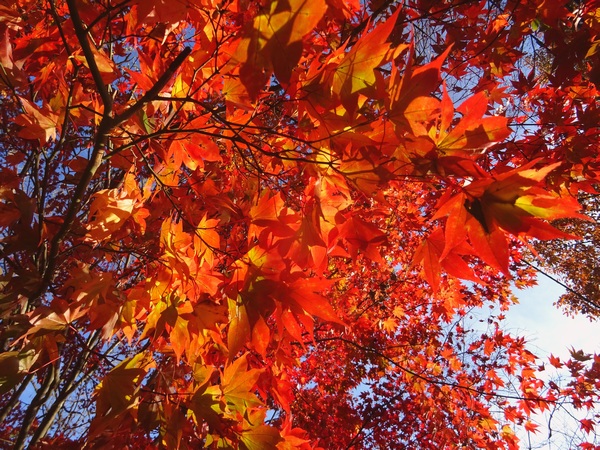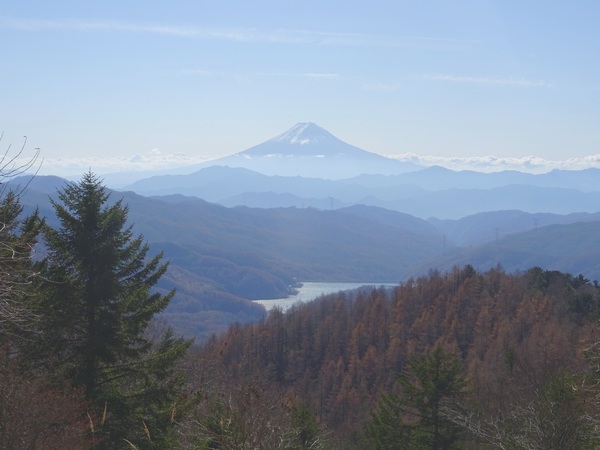
Above, the view from the top of Daibosatsurei, 2057 meters tall, in Yamanashi Prefecture.
We Hearty Hikers, a few days ago, drove up through Yamanashi Prefecture to climb Daibosatsurei, one of the “100 famous mountains of Japan.”
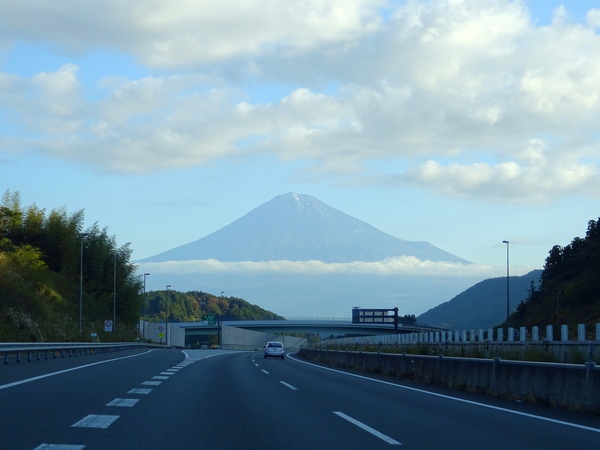
From the time, we got on the expressway in Shizuoka and headed toward Fuji, we knew we were in the right lane.
The hike was only going to be an hour and a half up, less than three hours round trip, so we were in no hurry to get to the starting point. We stopped repeatedly when a bit of beauty caught our eyes.
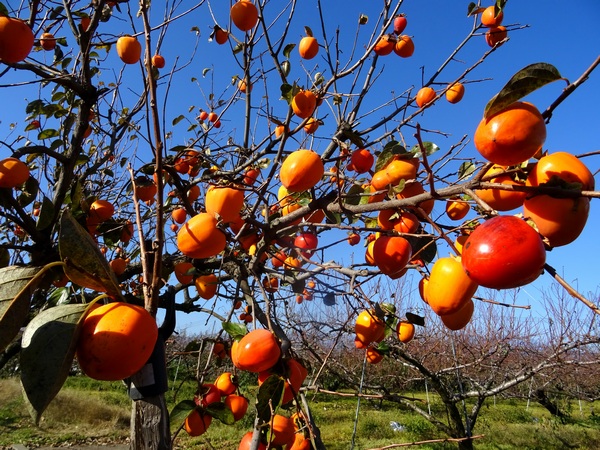
The persimmons, along the way, once we were in Yamanashi, of course got our attention. The combination of light orange fruit (mostly ripe) and dark, shiny orange fruit (sugars running, probably going soft) is lovely, don’t you think?
Yep, it was that time of year when the last of the persimmons on the limb have ripened . . .
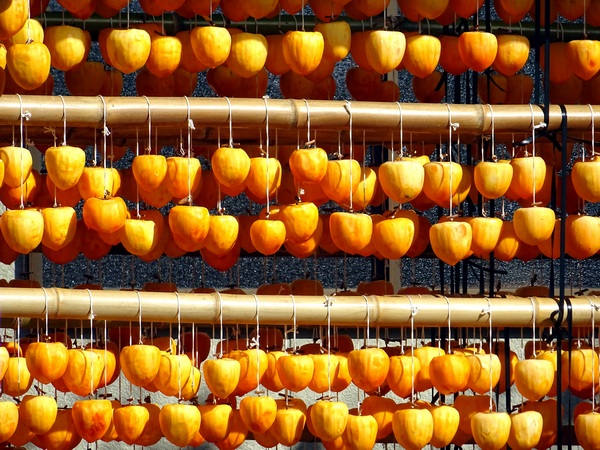
. . . and so many folks are drying the astringent variety of the fruit out in front of their houses.
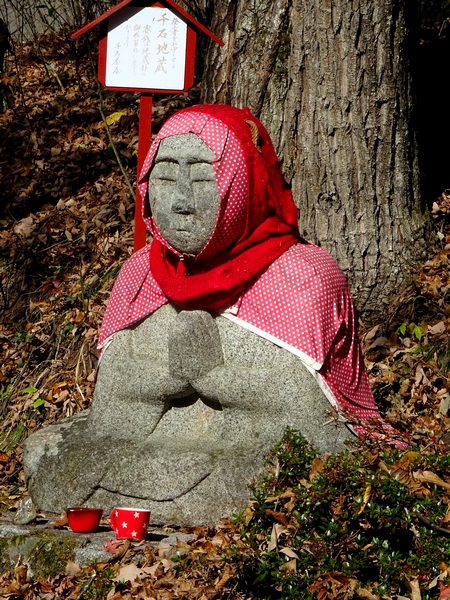
Another sign that we were on the right path.
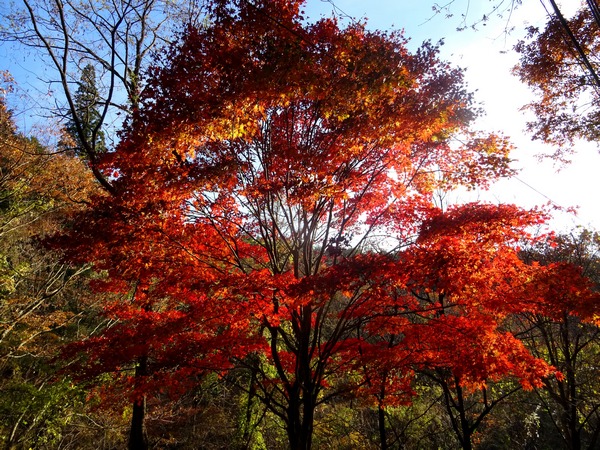
And another.
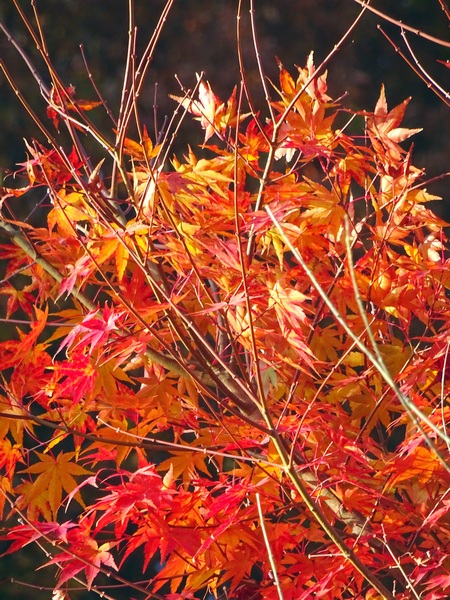
And another. Could it be that the persimmons and the maples are sharing some common knowledge? They DO seem to be expressing the same feelings this time of year.
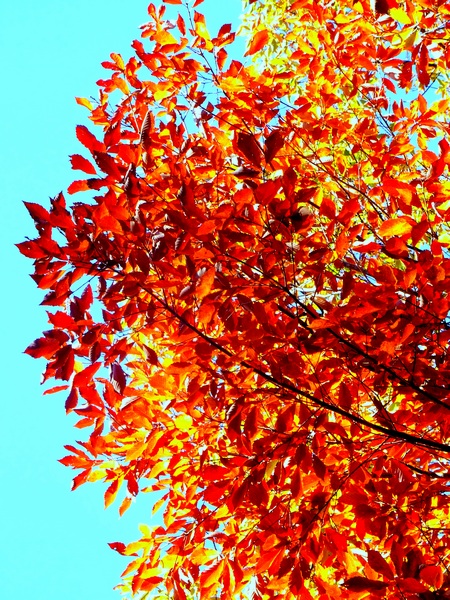
The golden beeches, in the sunlight, are pretty special, too.
Well, we got to the trailhead and got started around 11 AM. We went about everything very leisurely–and were back where we’d begun around 3 PM.
For the record: from the parking lot at the Kamihikawa Pass, you just follow the signs up. You can do the loop in either direction you like. It’s just 15 minutes or so to the Fuku-chan Lodge (where you’ll see the sign that tells you that Princess Masako and her hubbie, the Emperor, stayed there), then either left or right. We went left, the more direct route to the top. After an hour or so, you come to the main ridge, a collection of rocks (rocks big enough to lounge on) called Kaminari Iwa, or “Lightning Rocks.” This is where people like to sit and have a snack or meal and look out on the marvelous view of Mt. Fuji. Most likely it’s this view that makes this mountain one of the “famous 100.”
Turn left at the Lightning Rocks and five minutes later you’ll be at the summit, but here you’ll be in a little forest, so nothing much to see.
Then you can walk back, past the Lightning Rocks, and on along the ridge, to the Daibosatsurei Pass—and then turn right and you’ll be going down the path that leads you back to the Fuku-chan Lodge. 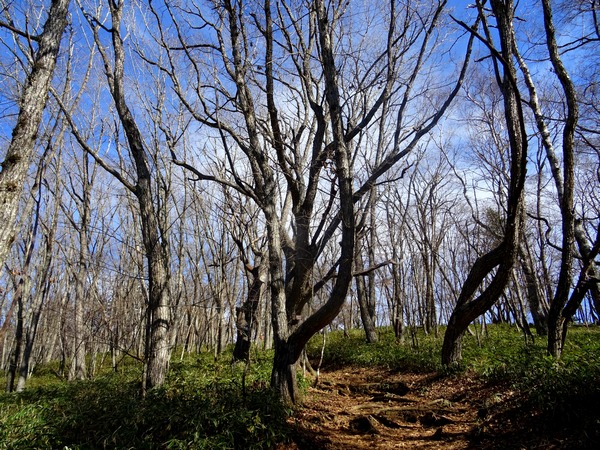
I’ve seen many blog posts describing this hike on overcast days, saying it was nothing special. Well, everyday in the woods is special to me, though it’s true there’s nothing unique about this walk, nothing especially special unless the skies are clear enough to get the really good view of Mt. Fuji.
The day we chose, fortunately, came with the bluest sky you could hope for—and we Hearty Hikers were ecstatic. Blue does that to us.
Recently I’ve been thinking about Alexander Humboldt, the German scientist/romantic who became the first naturalist/geologist to undertake a primarily scientific expedition to South America. His trip began in 1799 and ended in 1804. Charles Darwin and John Muir were big Humboldt fans.
Humboldt took with him a cyanometer, an instrument designed to measure the degree of blueness in the sky. This instrument was invented by de Saussure, a Swiss scientist. Basically, it was a color wheel with 53 degrees of blue painted onto pieces of papers along the wheel’s circumference. One could merely hold up the wheel, rotate it, and match the sky to the most similar degree of blue.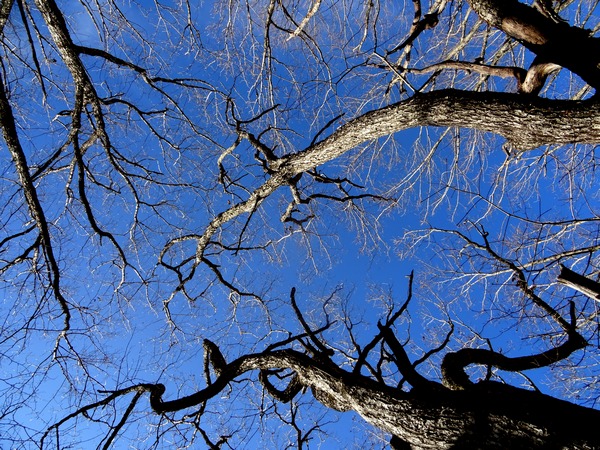
At the top of Mt. Blanc, de Saussure “measured” a blue to the 39th degree.
Humboldt did him one better. On a climb in the Andes, up on Chimborazo, he measured a blue to the 46th degree. Humboldt believed in the unity of nature (who doesn’t?), and he theorized that the clearer and bluer the sky, the more lucid the thinking of those who spent time looking up into it.
Well, I’m not so sure about any lucidity of thought, but a person definitely finds joy in the blue, as any human being who has ever looked up into the blue can tell you, and she can also feel a little of that unity that Humboldt believed in so strongly. Well, understanding that unity, maybe it does lead to lucidity of thought. I’ll think about it a little more next time I’m under a really blue sky.
But up on the Daibosatsurei trail, well, I myself had no need for de Saussure and Humbolt’s cyanometer—because, to tell the truth, one of our heartiest Hearty Hikers is a cyanometer—I’d dare to say a more accurate cyanometer than those used by those two great scientists.
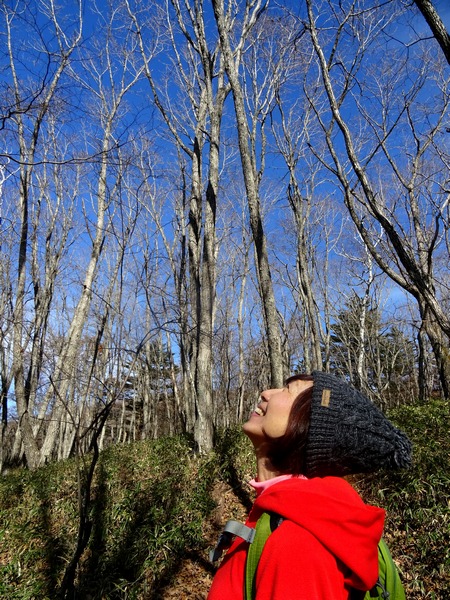
Basically, she looks up into the blue–and you observe how big her smile is. And then you know how blue the sky is. I don’t believe there could be any more accurate measuring than this.
I see I took 326 pictures of this blue sky. You probably don’t want to see that many pictures here on this blog post. But if you had been there, up on the trail, you probably would have looked up into that sky about that many times.
After the walk through the bamboo-grass, silver-trunked hardwood forest, we popped out into the opening, and had a full view of the main ridge.
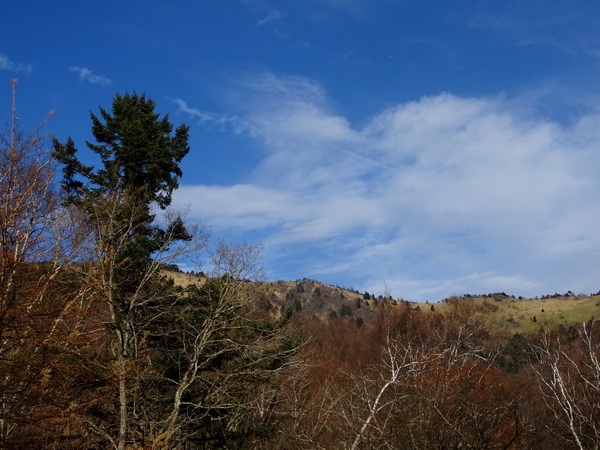
10 or 15 minutes later, we were sitting up there on Kaminari Iwa taking lots of Fuji shots. It’s a beautiful view. If you can imagine yourself looking at Fuji (below), then turning your head slightly to the right, then, if you’d really been there, you’d be looking at the snow-capped peaks of the Southern Alps—Mt. Akaishi in Shizuoka, and Mt. Kita in Nagano.
Sorry, no really good pictures of that.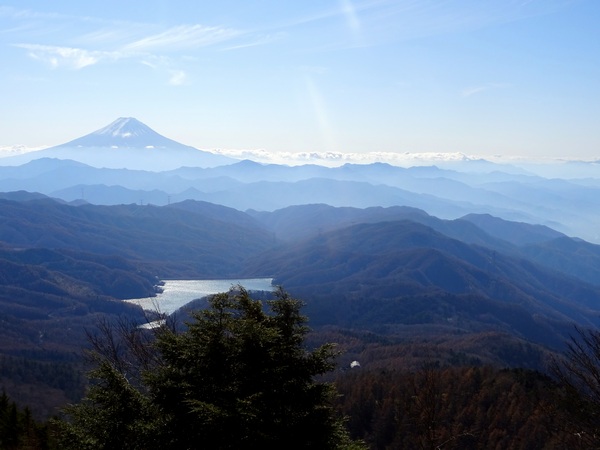
Yes, it gradually clouded over. It usually does. We went on to the summit, then walked back down the ridge to the Daibosatsurei Pass, then descended to the Fuku-chan Lodge.
And yes, we found the local hot springs resort.
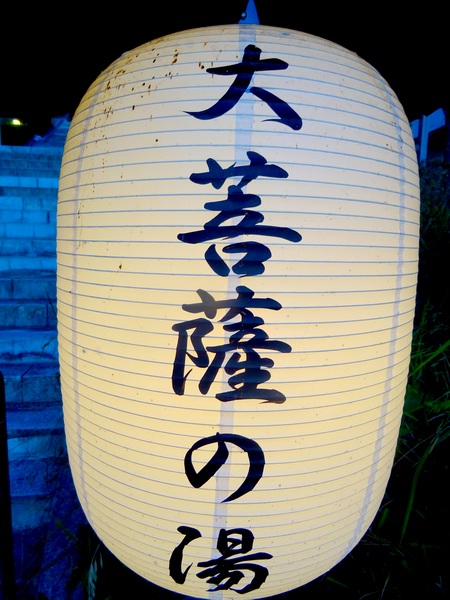
Soaking in the hot springs, with your eyes closed, you’ll probably see that your life spirit is looking something like this: 